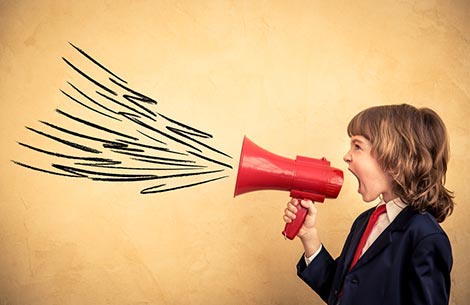Everything in life is about communication and messaging. How are you going to present your new idea? How are you going to position your background so that it is relatable to the role for which you’re interviewing? How will you articulate your differing perspective to a potential client? We all want the communication “magic bullet.” That’s why there are so many different classes and books out there on this topic. Strip away all of the window dressing, and good communication comes down to these ten factors:
Be yourself. You don’t need to adopt any kind of persona to be believable. People can spot a fake. Be genuine.
Speak and write with clarity. Do you talk too fast? Do you use too many big words in your writing? Both of these can turn your audience off and can make you seem condescending, even when you are not. Use plain, simple language to convey your messages.
Eliminate verbal tics. “Uhms” and “ahs” are the result of your mouth running while your brain is trying to think of what to say next. Rehearse, record, and repeat to reduce your reliance upon those fillers.
Make eye contact. Don’t stare (that’s creepy) but look at your audience. Hold eye contact for a few seconds, and then move onto another person. Failure to make eye contact can give the impression that you are condescending. Don’t forget to smile. A smile is universal and helps people relax.
Focus on body language. Do you fidget, play with your hands, or twirl your hair? Any of these tell your audience that you are nervous, and nervous can also come off as a lack of confidence. Do you stand like a statue? Move around! Get away from the podium, get up from the table and walk around.
Don’t rely on handouts or slides. These should be materials that supplement any presentation. They should not BE the presentation. Don’t read to your audience. You’ve probably been on the receiving end of that, and you know that it’s awful.
Manage the conversation. Take control and guide the conversation or presentation where you want it to go. Don’t allow the discussion to become sidetracked and waste your time.
Be enthusiastic. No, you don’t have to be infomercial-host-enthusiastic, but you do have to come to the table or podium with a certain amount of energy. You should be excited and engaged about your discussion—that excitement will wear off on the other people involved. Think about the energy that the best speakers bring into a room. That’s what you want to emulate.
Be humorous. You’re not doing a stand-up routine at the Laugh Factory, but at the same time, you’re probably not presenting to a room full of automatons. Humor used judiciously can be a very effective means of making your audience feel relaxed, and for improving your connection with them. This one can be tricky, so resist the urge to wing it and be sure that you’ve vetted and practiced your humor.
Plan for the unexpected. I was once giving a presentation at a client’s office when the fire alarm went off. We had to evacuate the building and wait outside until the fire department gave the okay for us to return. I never expected that to happen, but it did. Most unanticipated matters aren’t quite so dramatic—think of a loud lunch setup, the microphone that cuts out, or the ever-popular malfunctioning projector. Handle yourself in a calm and collected manner, and your audience will affirm that you are someone who can adjust to changing situations on the fly and that you have the confidence to handle the unexpected.
Not Authorized
You are currently not authorized to access this section.
Please contact your Administrator to change your authorization settings.
Please contact your Administrator to change your authorization settings.


